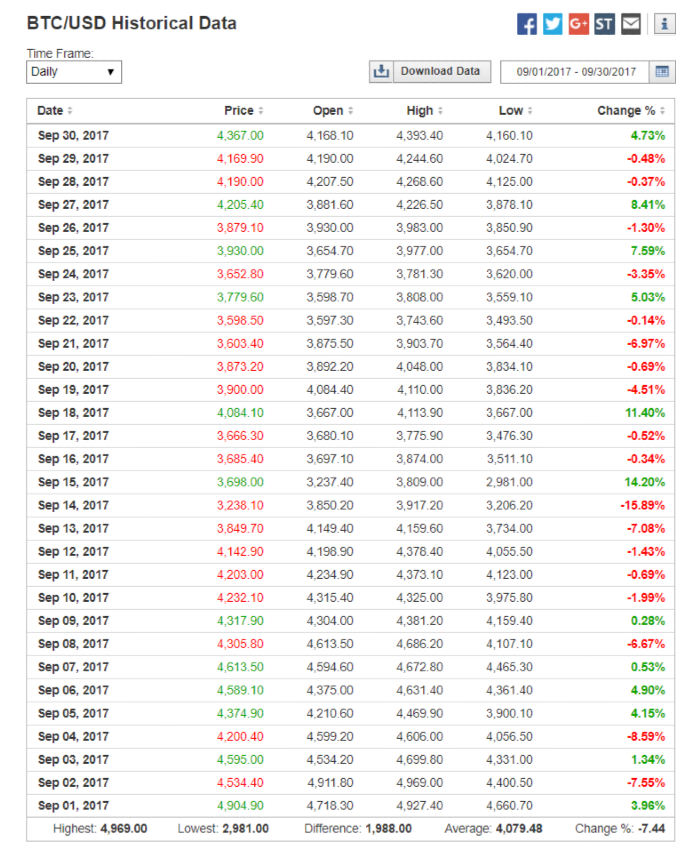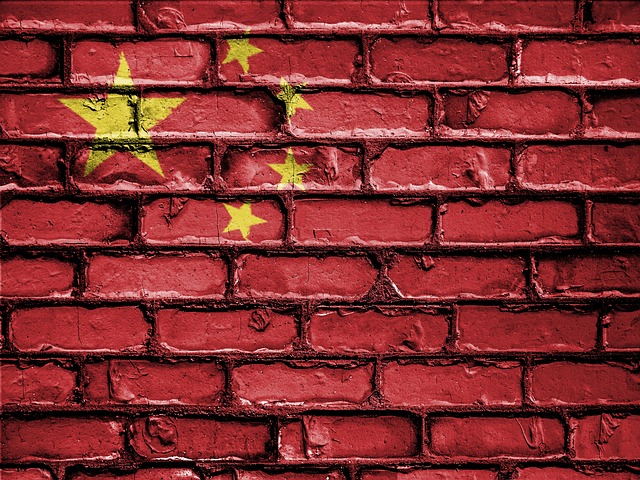Just when it looked like initial coin offerings (ICOs) couldn’t get any hotter, China stepped in and banned ICOs. We look at what happened, and what this means for the immediate future of cryptocurrencies.
Mark(et) my words
The ban came as a shock to the markets – 23% of all Bitcoin transactions have been Chinese in origin – and there was a strong reaction to the news. In just 5 days, Bitcoin plummeted by nearly $500 from a high of US$4,698.72 on September 7 to $4,161.62 on September 11.
What it did illuminate, amidst all the momentary panic, was how far the currency’s global support has come since its infamous Mt. Gox disaster. 5 years ago, there was a 50% drop overnight when China’s biggest bitcoin exchange stopped accepting deposits in Chinese yuan in 2013. It seems China is no longer the determining factor for the Bitcoin market.
This time around the news, in addition to other news developments, brought the currency down from its all-time high near $5,000, dipped it down to US$2,981.00 on September 15 (thanks to the Bitcoin exchange ban below), before rebounding at month end to US$4,367.00. (Source: Bitfinex.)

Snap, crackle, pop: The ICO ban
In January of this year, China’s central bank issued a warning aimed at major Bitcoin exchanges. 8 months later, September 4 greeted the market with a bombshell. The People’s Bank of China (PBoC) released a cutting circular, touting ICOs as “illegal and disruptive to economic and financial stability.”
By the time the National Internet Finance Association cautioned investors on September 13 about the high-risk factor surrounding Bitcoin and other cryptocurrencies, there was a large list of participants to warn. According to the Beijing Internet Finance Association, an estimated 65 ICO transactions took place between January and June, with more than 105,000 investors committing a combined net of 2.6 billion yuan (US$398 million). This was exponentiated by a further US$750 million in July and August alone. A crackdown was almost inevitable.
While legitimate crypto startups have been hard hit, it’s not all doom and woe, depending on who you ask. Many market analysts are calling the ban “probably temporary” (an opinion with which a Chinese government official seems to agree). This strategy is also in line with China’s standard cease-and-take-stock strategy (there are even theories of a lift after the October 18 Communist Party Convention). Some investors are using the opportunity to get in on NEO at a lower price. Backers in other markets are breathing a sigh of relief that ICOs won’t be bought out as quickly as they have been thanks to Chinese investors’ deep pockets. This means less competition and more cashing in on exciting token offerings at lower prices.
Humpty Dumpty slides down the wall: The Bitcoin exchanges ban
In what played out like an everyday soap opera, two days later yet another hard announcement hit the papers on September 15. China would also be outlawing cryptocurrency trading, shutting down domestic Bitcoin exchanges, effective October 1st of this year. It is clear that the steady climb of investing capital going into alternative currencies is what made the government rethink its stance. Especially since this decentralised investment stream is showing signs of posing a threat to a government-run banking machine.
This sent shockwaves through the markets, and Bitcoin dropped to US$2,981.00, its lowest price for the month.
It ain’t over till it’s over
In Beijing, crypto is far from being a divorcée. In June, PBoC announced a 2020 fintech plan. Judging from the evidence, this is sure to include the blockchain. In December 2016, the central bank ran a cryptocurrency trial. In February, PBoC head Zhou Xiaochuan followed up with a statement that any possible blockchain technologies they would employ were bound to be built on a permissioned network. Then, in August, PBoC director Yao Qian and representatives from various Chinese financial institutions set off on a digital currency field trip to San Francisco.
And while some are calling China’s measures draconian, the country is no stranger to clamping down on alternative currencies … or any other virtual services, for that matter. In 2007, QQ Coins, an in-game virtual currency produced by Internet giant Tencent, was on a fast-track to turn into a parallel currency, with everyone from CD shoppers to private chat QQ-girls using it as a method of payment. In 2009, this prompted the government to ban virtual currencies from being exchanged for goods.
What will the future hold for cryptocurrency and blockchain technology in China? Time will be telling, but we’re betting NEO will have a spot in the limelight. As will the Chinese cryptocurrency equivalents of businesses like WeChat and Weibo – Chinese alternatives to the money-making streams of tech giants Twitter and Facebook Messenger.
In the interim, Japan and South Korea have stepped in as the world’s major Bitcoin trading markets.

